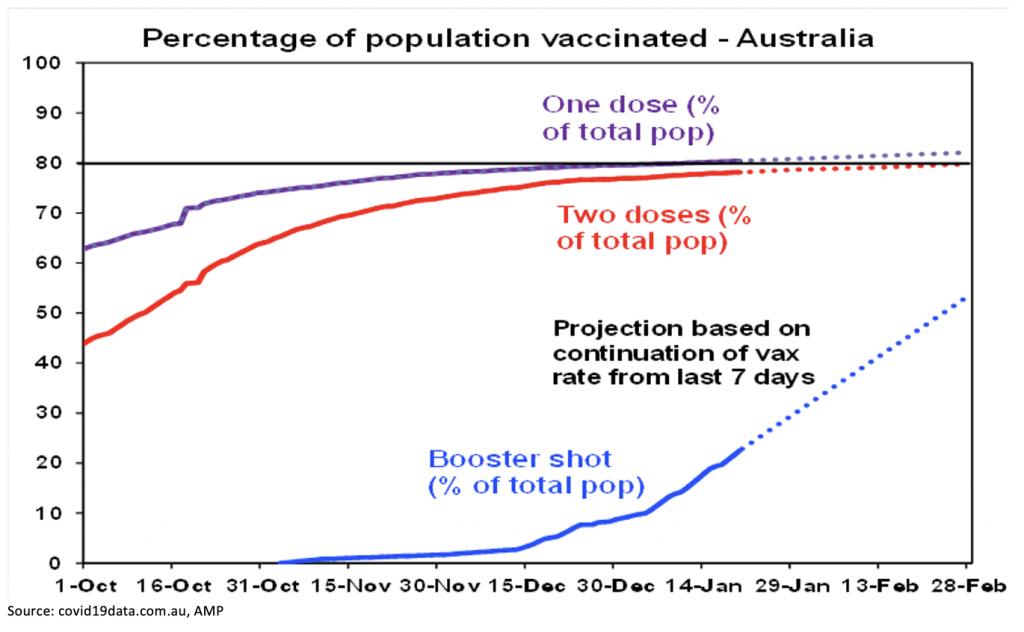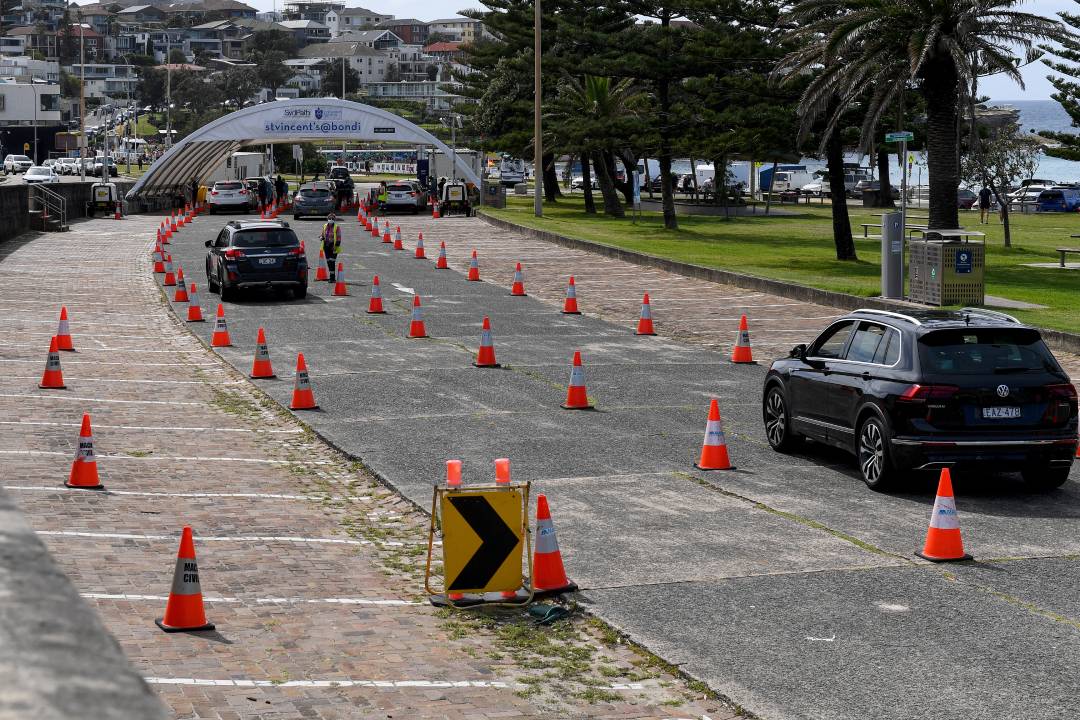

The Omicron wave that has seen global coronavirus cases surge to record levels, is now showing signs of slowing.
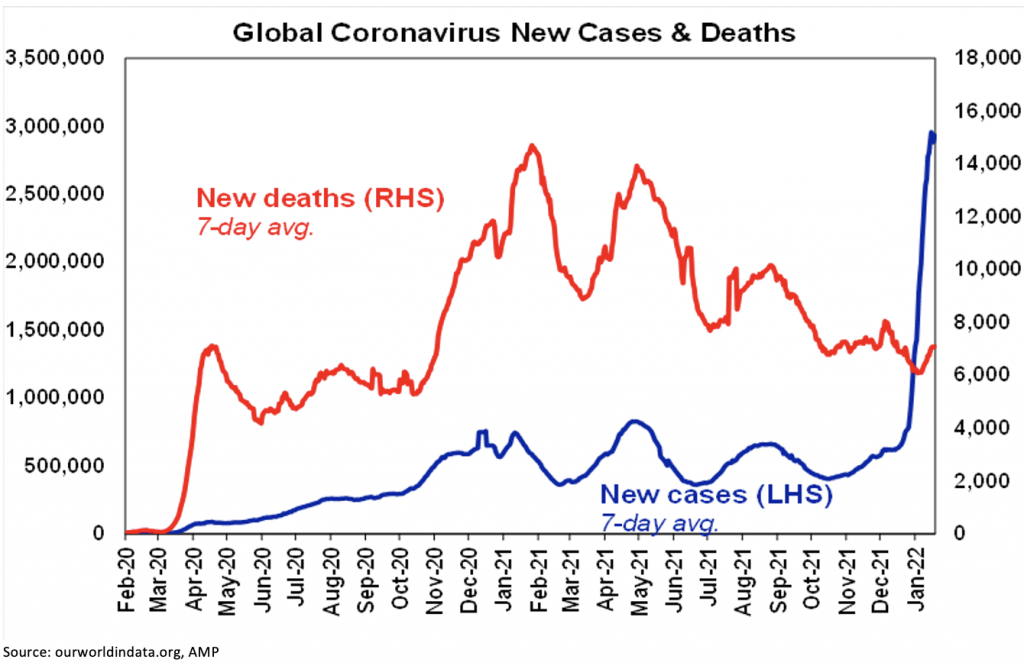
Just as South Africa saw Omicron cases peak and start to roll over a month or so after the first case, the same appears to be happening in the UK, US, Canada, Europe…and Australia. South America and Asia are lagging and still on the rise though.
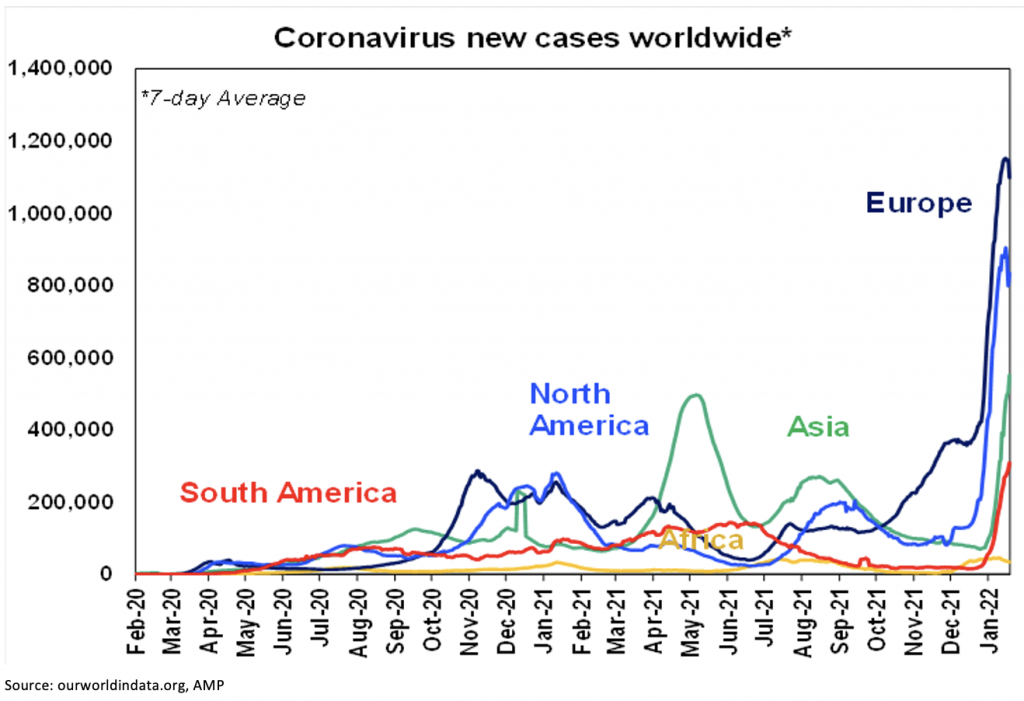
While deaths and hospitalisations have increased reflecting the lagged response to the surge in cases since mid-December, they remain subdued relative to new cases compared to prior waves. This is evident in most developed countries and is consistent with the initial Omicron experience in South Africa – and can be seen in the next two charts for the UK and the US.
It appears to reflect a combination of prior covid exposure and vaccines providing some protection against serious illness and the Omicron variant being less harmful. The easing in new cases and the likely flow on to reduced pressure on hospitals is seeing a move towards some easing in restrictions in a number of countries.
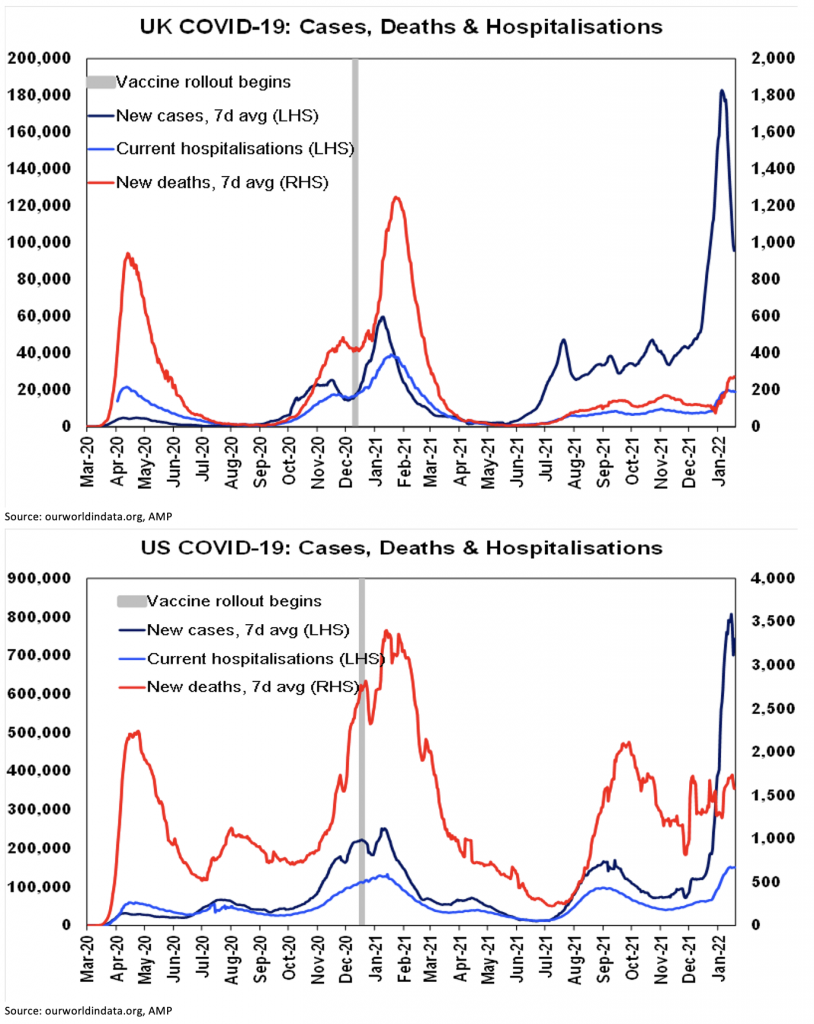
It’s a similar story in Australia - with new cases now falling and the proportion of cases suffering serious illness remaining low versus prior waves. The sheer surge in cases combined with staff absences due to isolation requirements has placed immense pressure on hospital systems. However, hospitalisations and deaths remain subdued relative to the surge in cases compared to previous waves and hospitalisations are now slowing in NSW and Victoria.
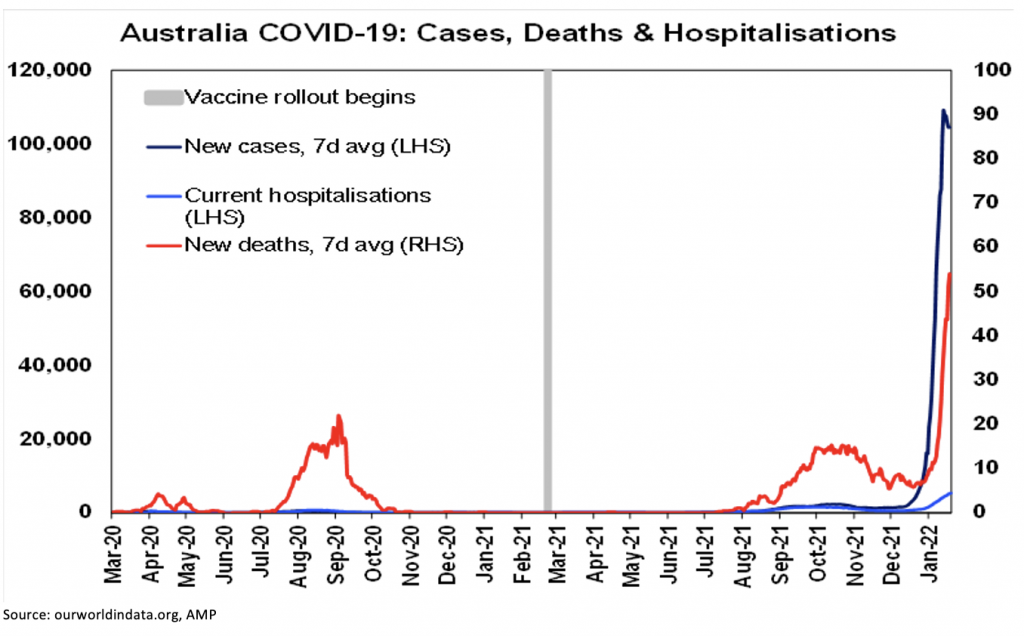
This appears to reflect a combination of Omicron being less harmful than previous variants and vaccines providing protection against serious illness. Data from NSW Health show that Omicron cases are about a third as likely to end up in hospital as Delta cases. It also shows that 1.2% of the fully vaccinated are likely to go to hospital compared to 9.1% of the unvaccinated and 0.1% of the fully vaccinated ending up in ICU compared to 1.5% of the unvaccinated. So, an unvaccinated case is 7 times more likely to end up in hospital and 15 times more likely to end up in ICU than a fully vaccinated case.
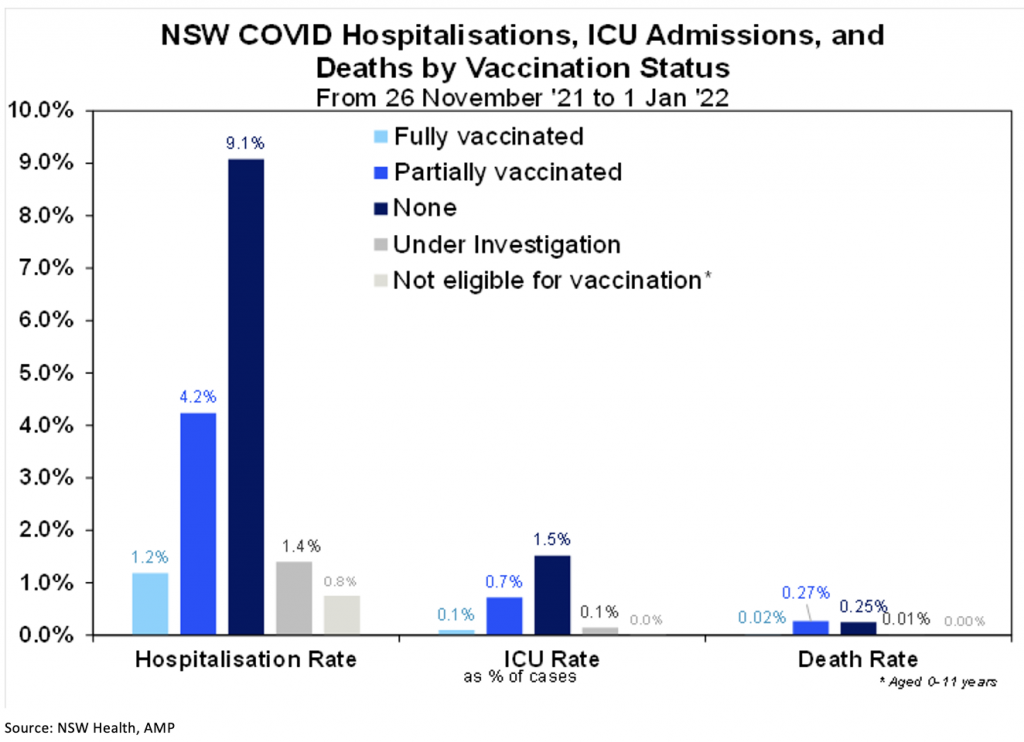
And while new deaths (red line in the next chart) are at record levels in Australia they are running about 10% of the level suggested by the 2020 wave (dashed line) reflecting protection from vaccines and Omicron being less harmful.
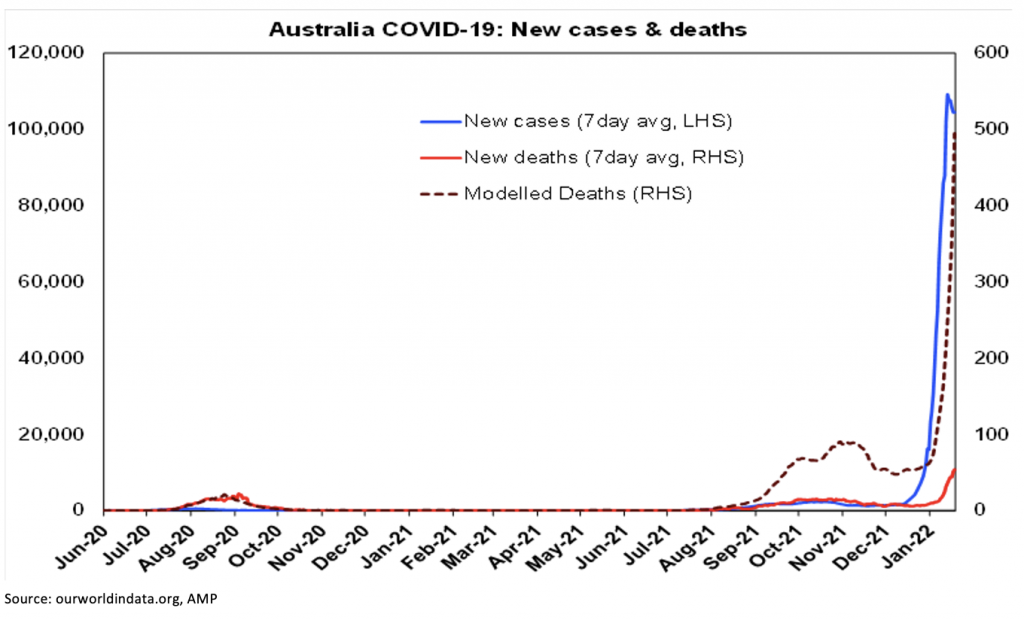
The combination of greater exposure to covid globally and vaccines providing increased immunity, and covid morphing in a way that is more transmissible but less harmful with Omicron and better treatments all provide reason for optimism that the pandemic may be heading down a path towards becoming endemic and where the world can live with covid.
The main risk remains of more harmful variants emerging – particularly in poorer countries where only 21% of the population is fully vaccinated. It’s in the developed world’s interest to help vaccinate poor countries to reduce the risk of more mutations. Australia at 78% double vaccinated is at the high end of developed countries where the average is 72%.
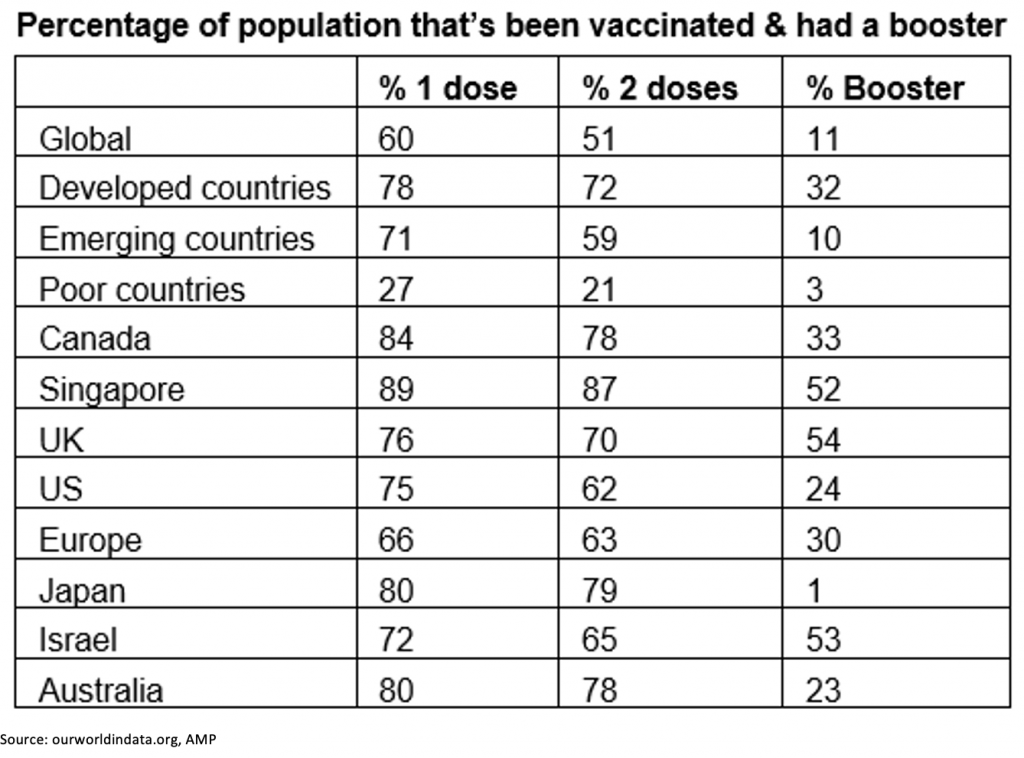
While boosters started slowly in Australia, 23% of the population have now had one and it's rising rapidly.
